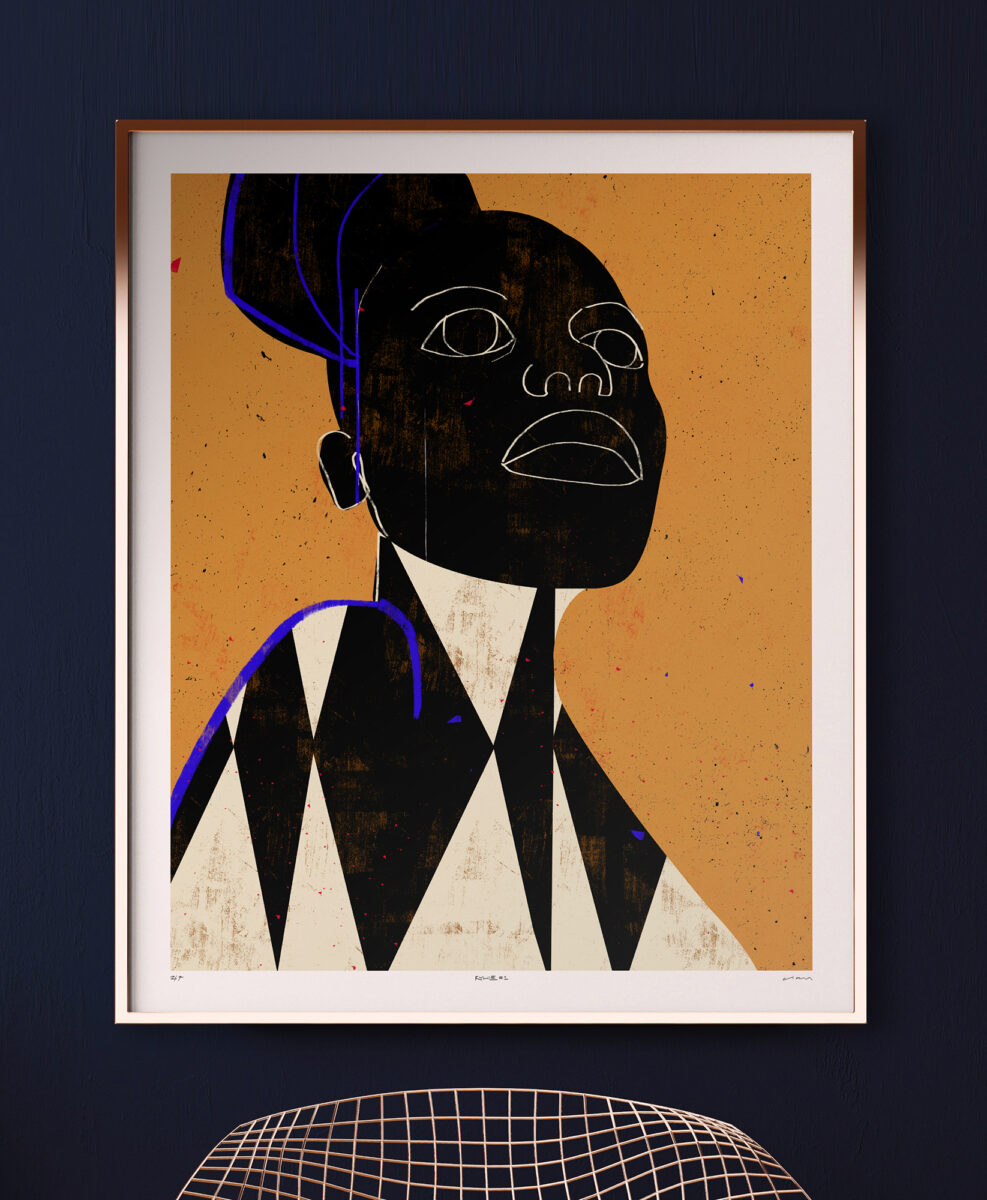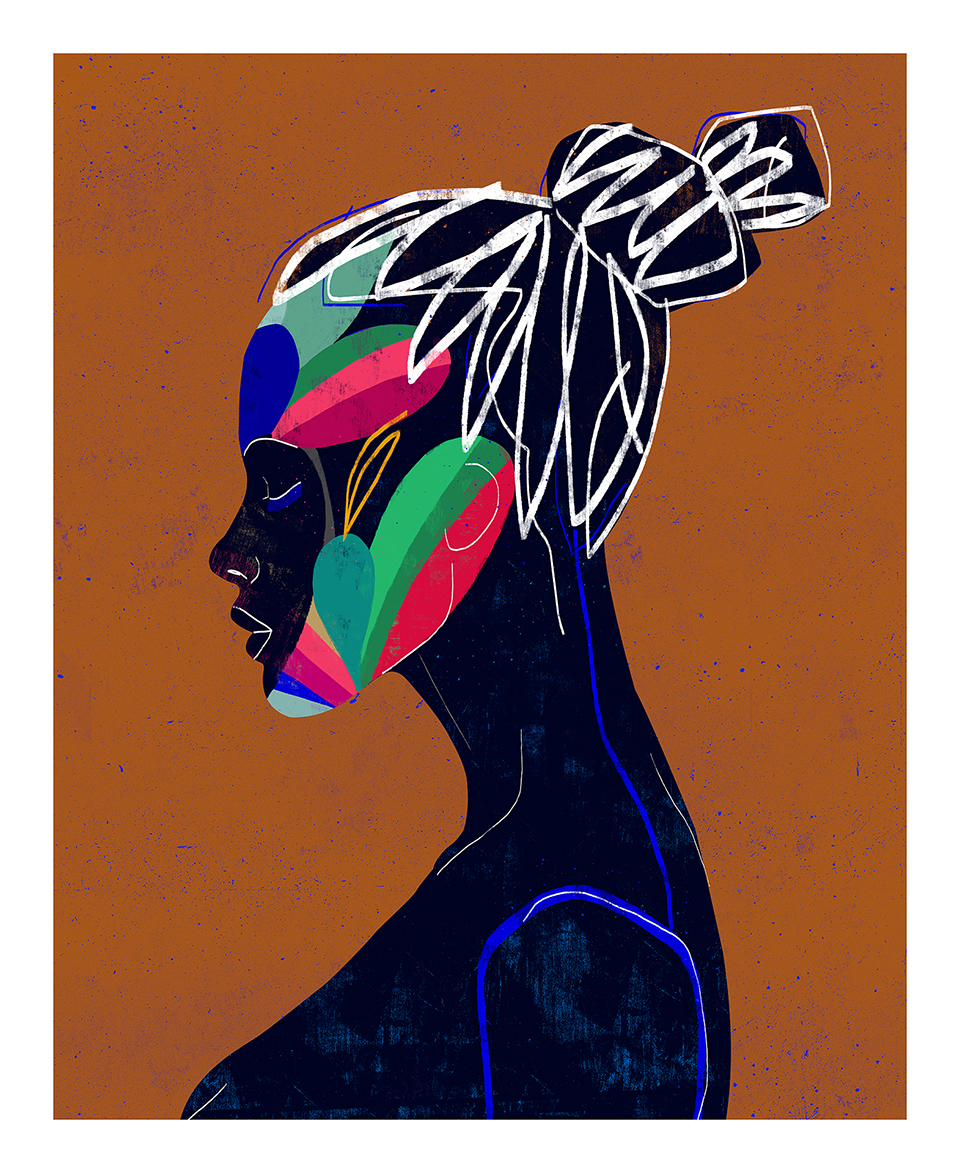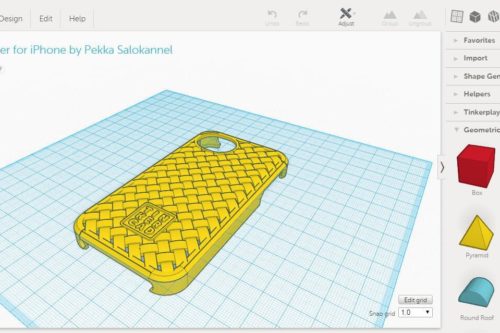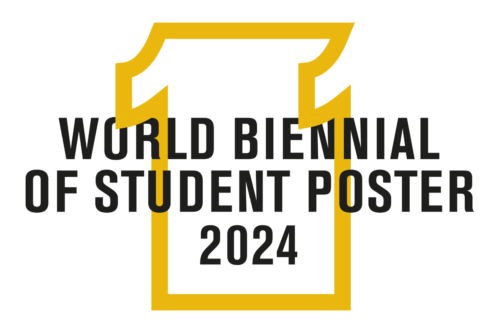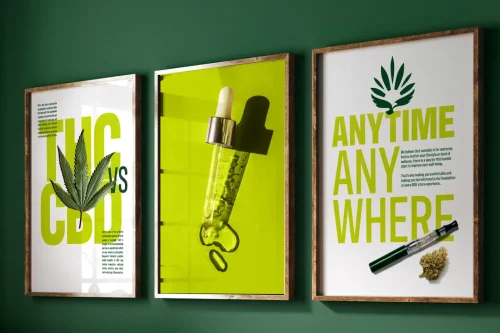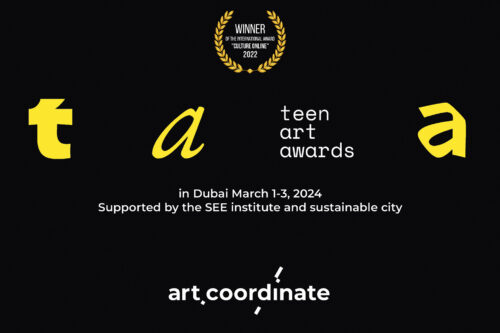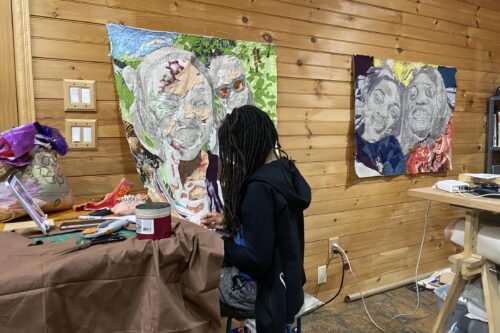Luciano Cian’s portraits composed of lines and colorful geometric shapes to bring lightness, happiness, and the message of equality within our differences.
Born in São Paulo and currently living and working in Rio de Janeiro, Luciano Cian began with oil painting techniques at the age of 18. His production covers painting, drawing, printmaking, photography, video, and urban intervention. In 2008 he founded the Collective Fuso (Cian + Kjá), which consists of interactions between several platforms and artistic languages. Nowadays his work is focused on drawing with giclée prints, linocut, and acrylic on canvas/wood. Cian’s works have been acquired for private collections around the World (Brazil, USA, United Kingdom, Germany, France, Australia, New Zealand, Hong Kong, China, Singapore, Switzerland among others).
Luciano Cian worked in exhibitions in Brazil and abroad: MuBE Museu Brasileiro da Escultura – SP, CCJF Centro Cultural Justiça Federal – RJ, Parque Lage – RJ, Espace L – Geneva – Switzerland, Galeria Colecionador Contemporâneo – RJ, IED Istituto Europeu di Design – SP, Galeria Pretos Novos de Arte Contemporânea – RJ, Museu de Imagens do Inconsciente – RJ, Museu Nacional dos Correios – Brasília, among others.
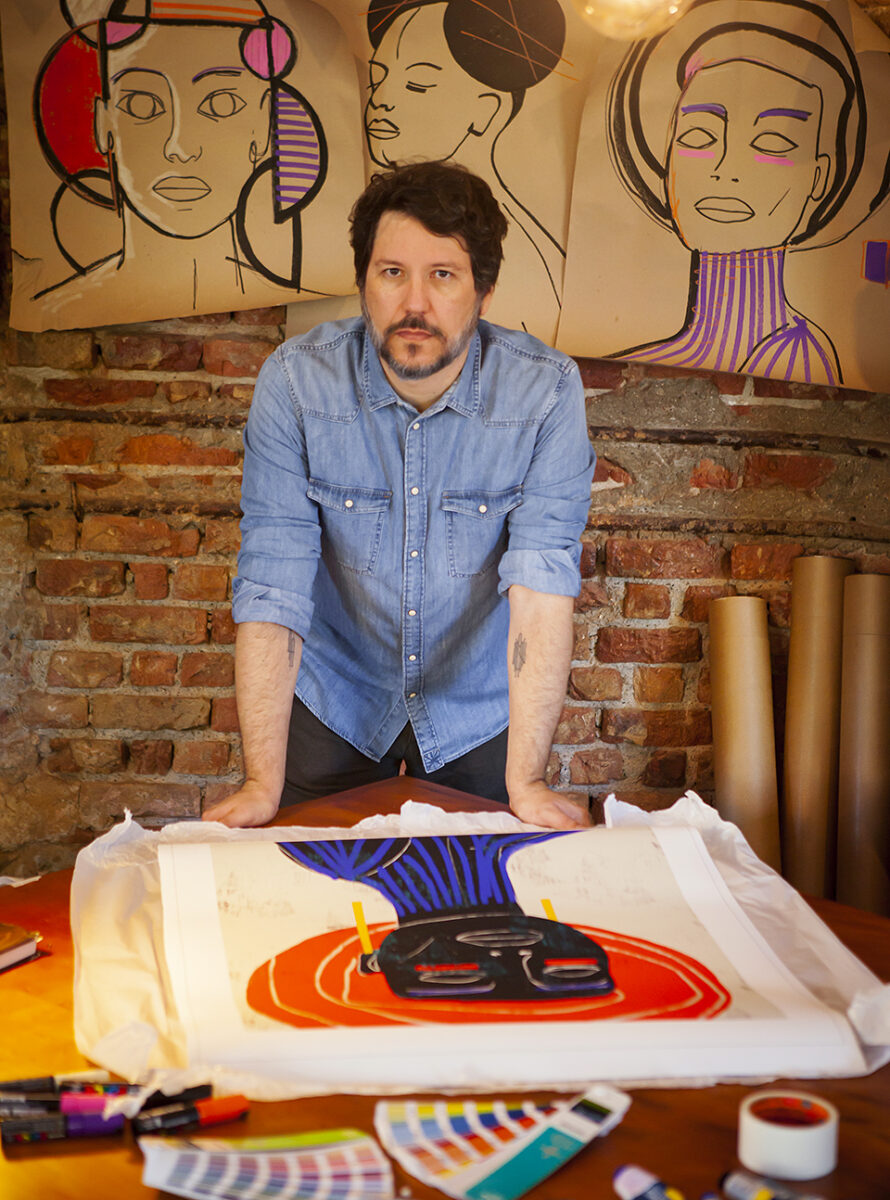


What first prompted you to design women’s portraits?
I love photography, especially portraits of people. I believe it comes from there. I’ve always been inspired by photographers with Sebastião Salgado, for example.
About being mostly women, it has to do with strength and details. Women are more interesting because it allows me to wear accessories, colors, different haircuts.
I can do that on men too, obviously, but society’s reading is different, basically because we’re still sexist. And I believe that this kind of approach can help to combat these very Jurassic values.
What’s the most important element in your artwork?
I believe it’s the colors and the simplicity of the lines.
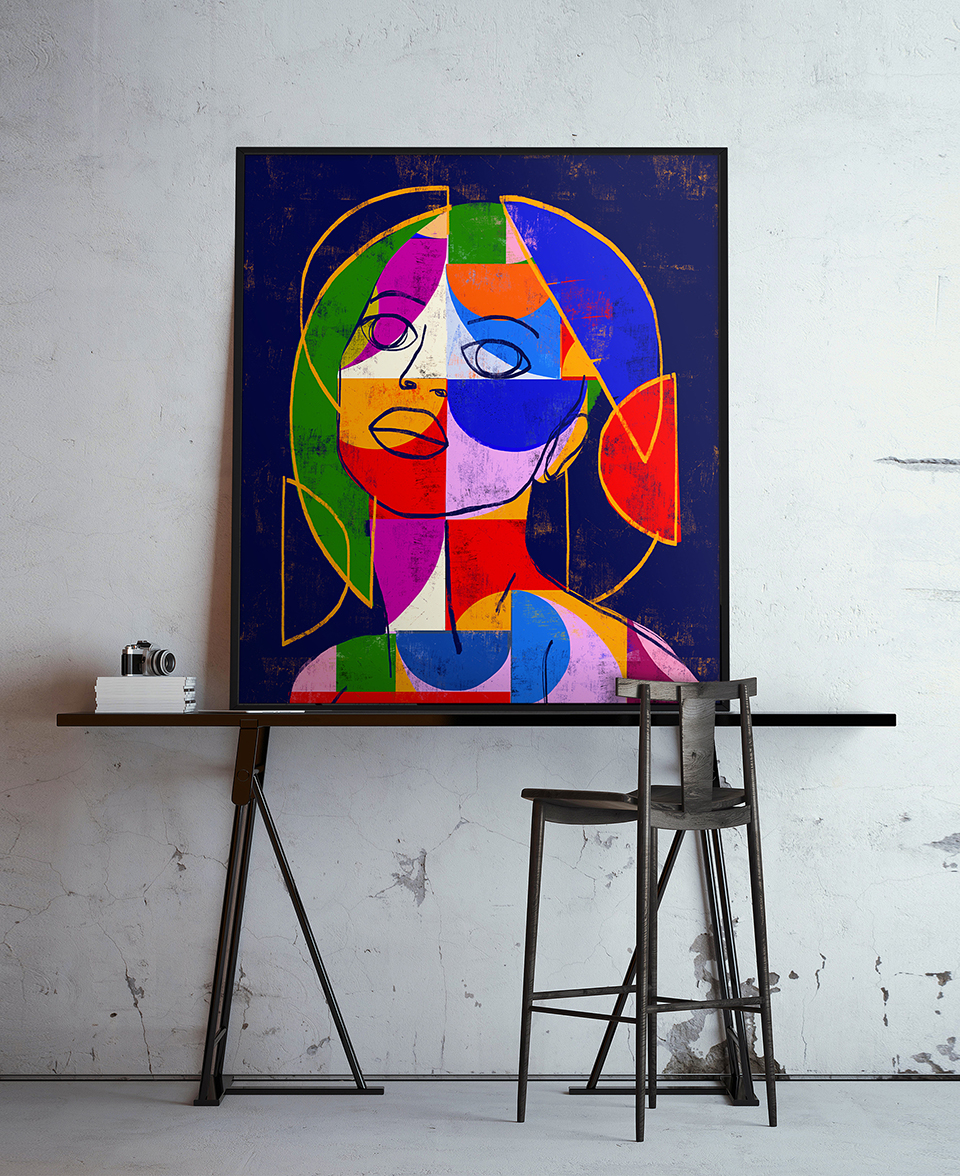

What are you hoping to communicate to the viewer through your work?
I hope you see features and beauty. If, somehow, people understand that these are people and that we are all equal within our differences, great. I do this to bring lightness, happiness.
How has the art world’s relationship with the audience changed since the Covid-19 crisis? Has it affected your work and if yes, how?
With the pandemic, most people were confined indoors. People started to give a little more value to the environment in which they live. With that, they started to look more closely at art in general. Even because art is always a breather.
What the pandemic brought to my work was an opportunity to dive deeper, to invest more time and attention in my production.
Despite living in one of the worst countries in the world within this Covid 19 scenario, I try to bring some light to all this darkness.
Here in Brazil, things are terrible because we have a president who is completely silent. It’s a complicated scenario where I try to cheer myself up through colors and lines.
What would you advise the artists of our times?
Produce more and more. Always breaking rules and sticking his finger in the establishment’s face. It is necessary to transgress to move forward.
Links:
